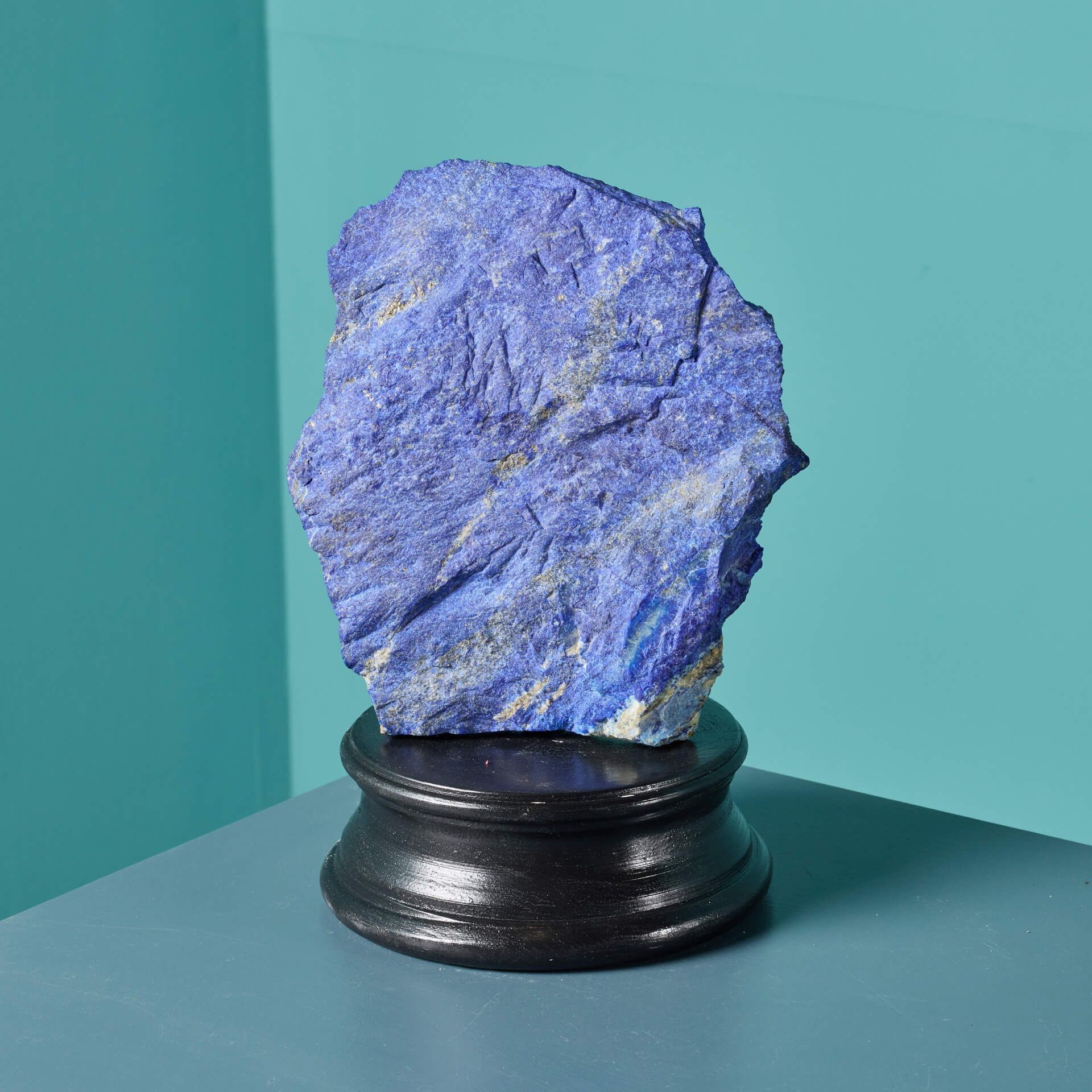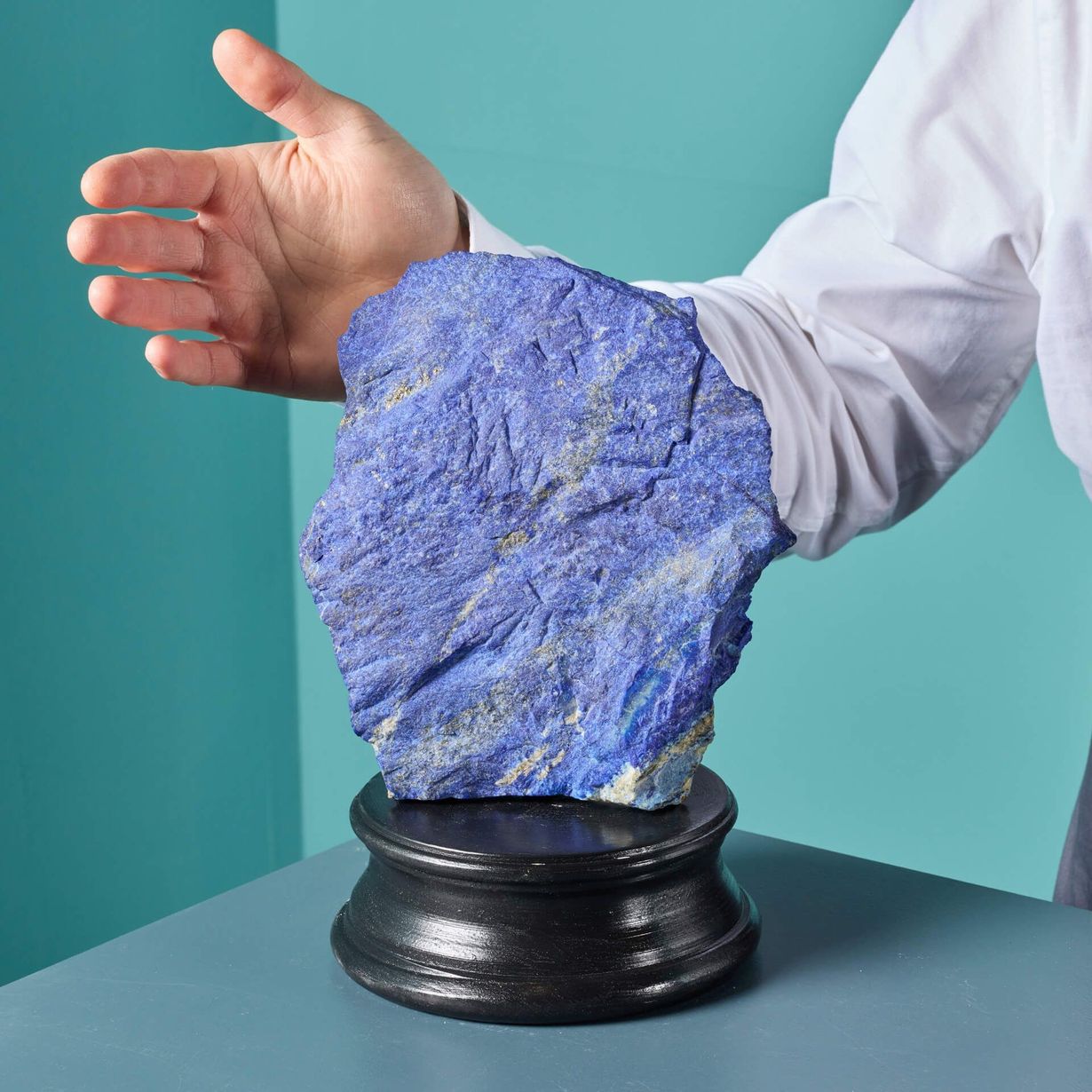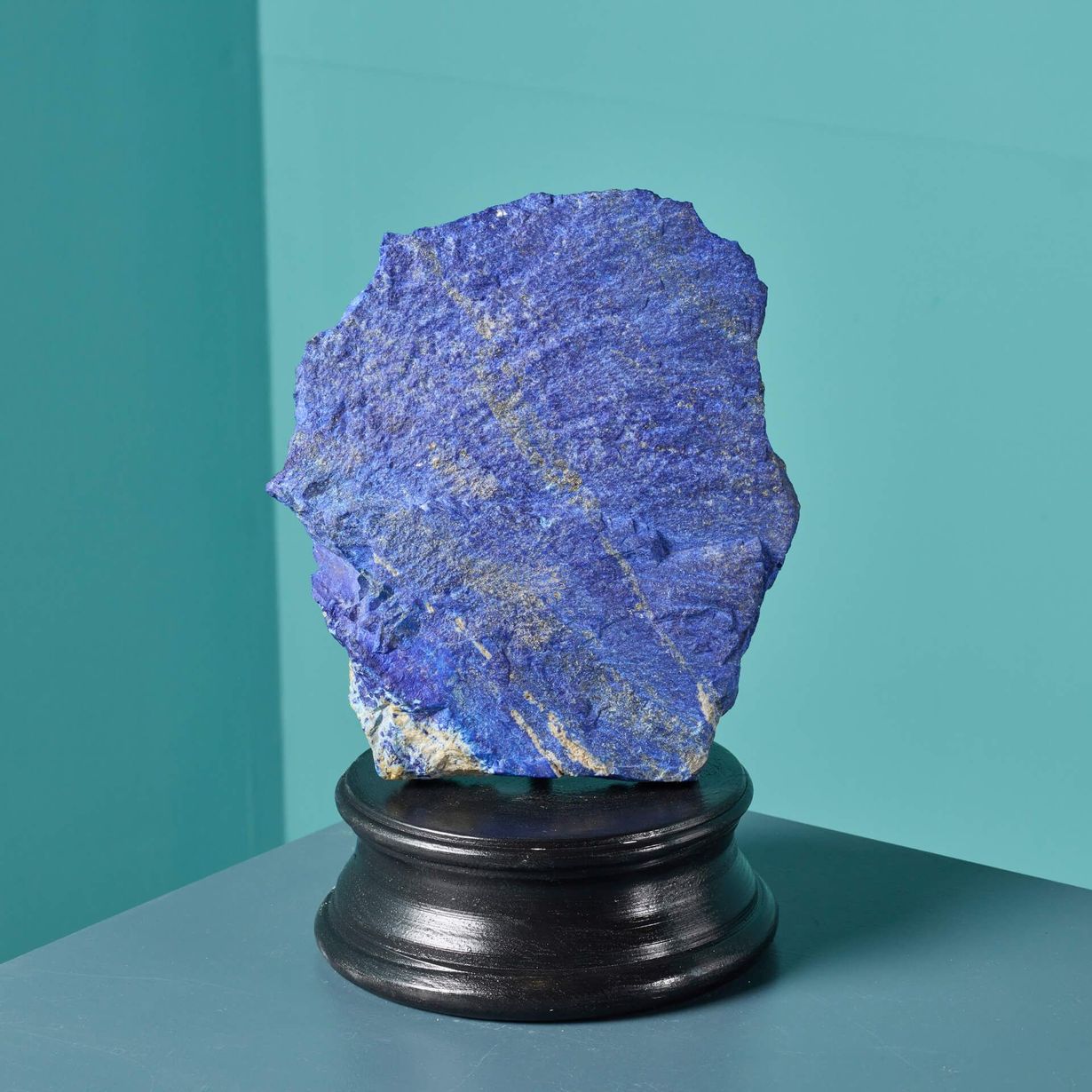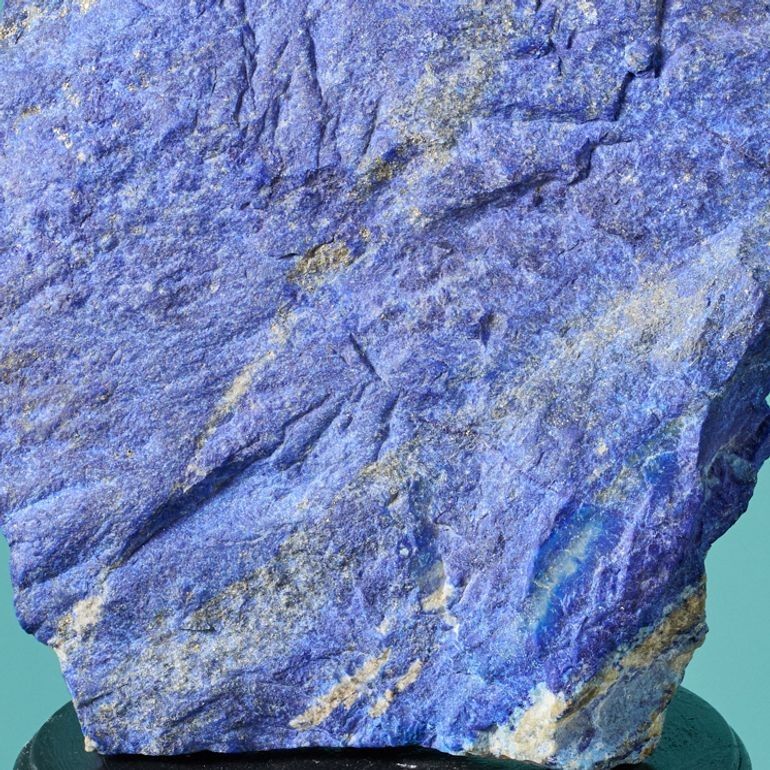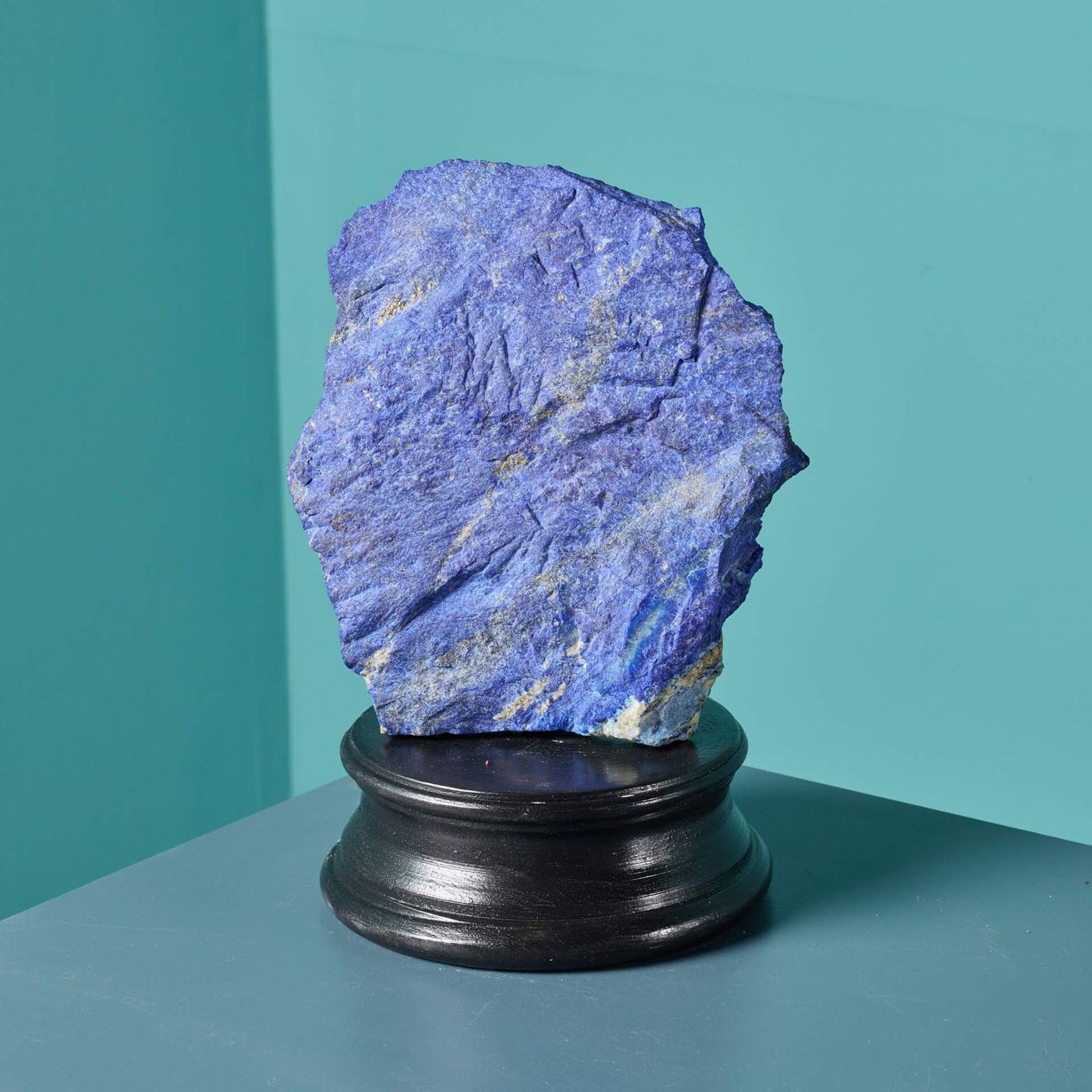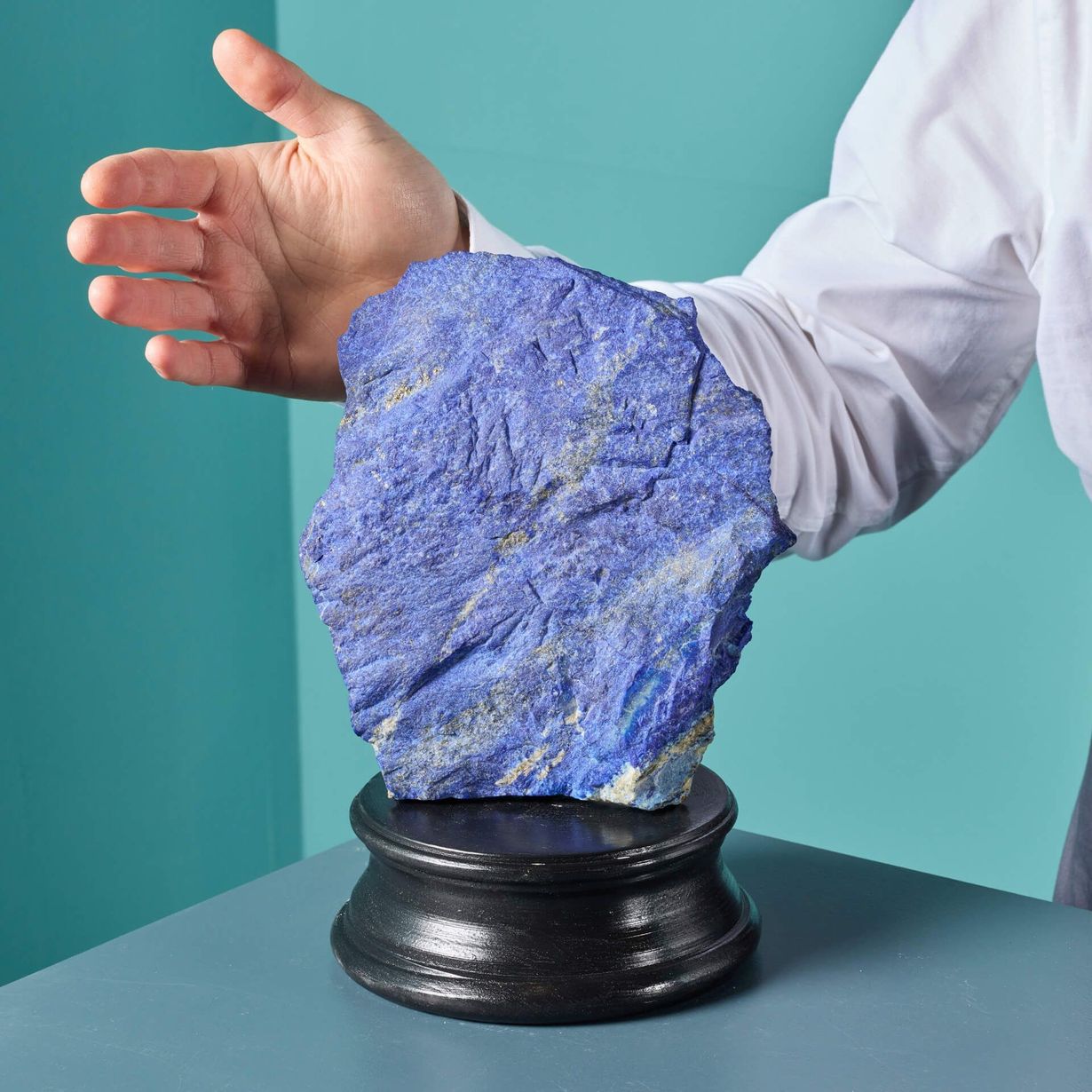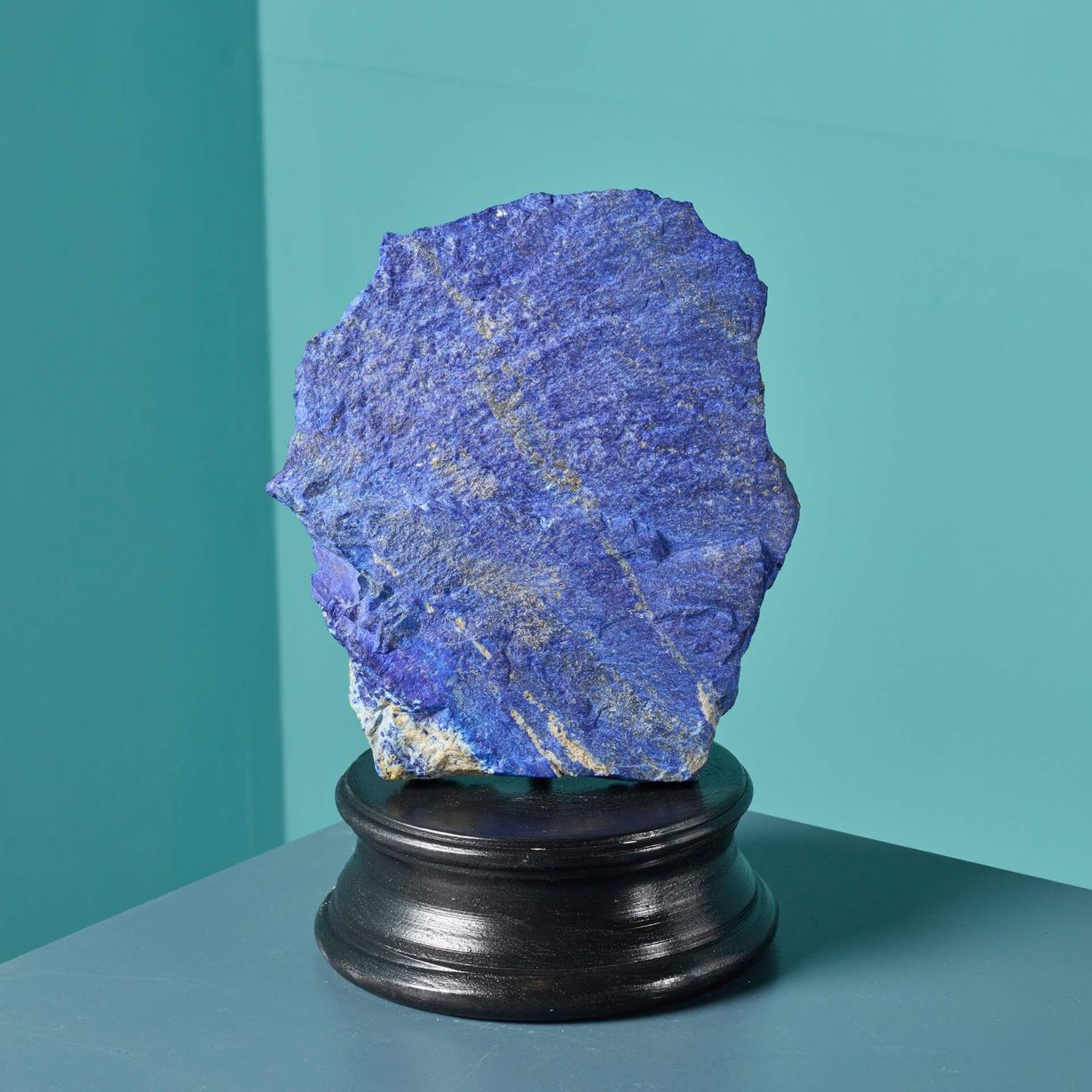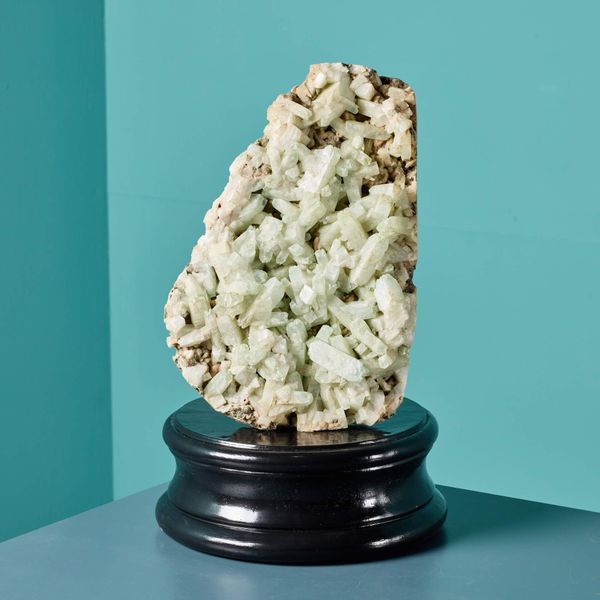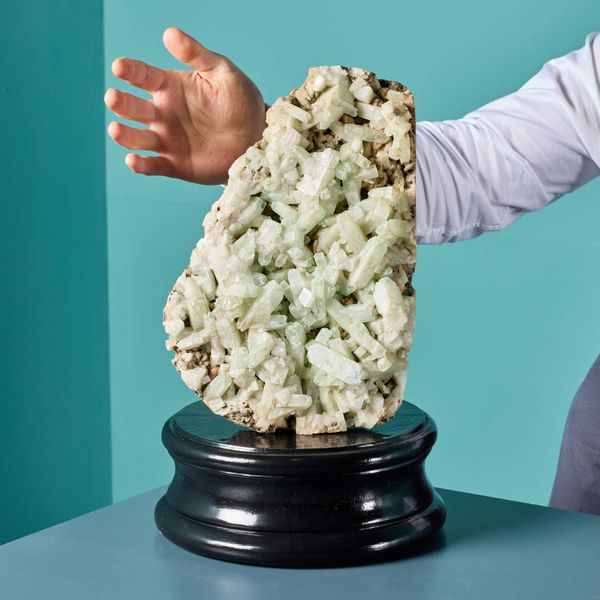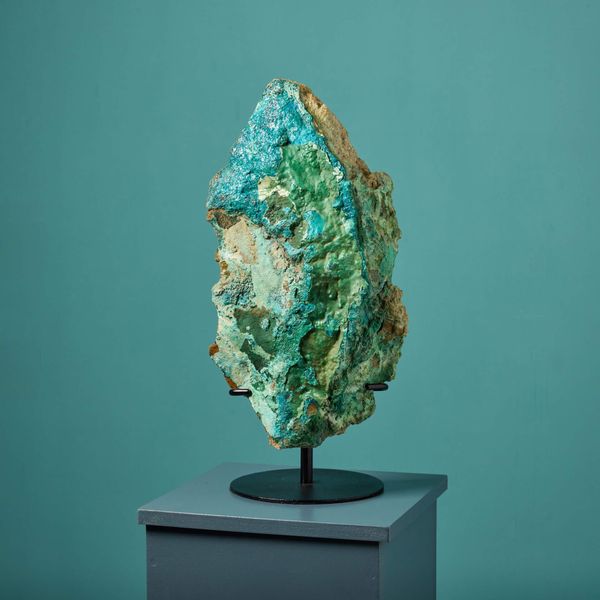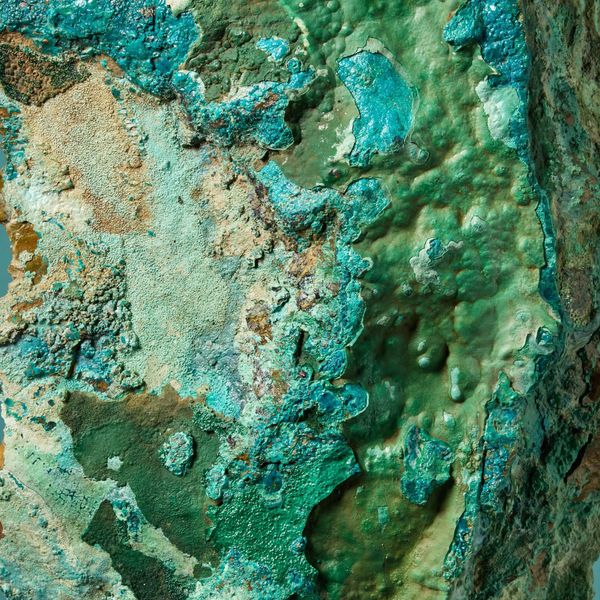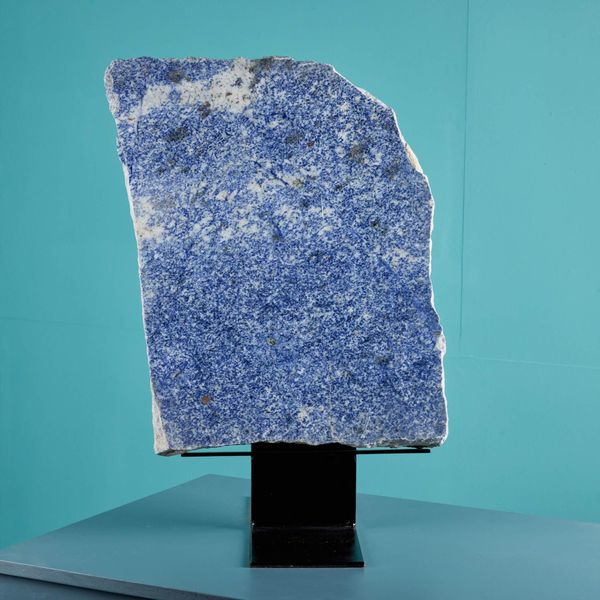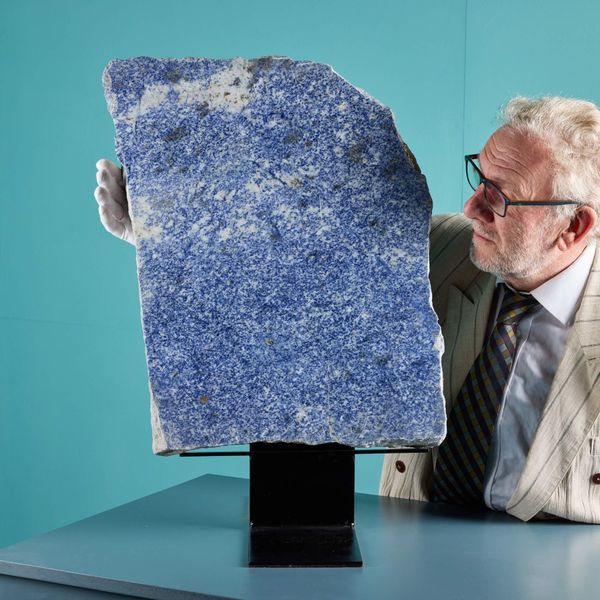About this piece
back to topA natural Lapis lazuli specimen of a plate-like form. Also known as lazurite, this raw mineral originates from Afghanistan. It is quite eye-catching as it showcases a bright vivid blue colour. It would certainly make for an impressive display piece in any home, or in a collectors cabinet.
Distinct crystals were thought to be very rare until large numbers were brought out of the mines of Badakhshan, Afghanistan, in the 1990s. These mines remain a major source today.
More on Lapis Lazuli
What is it?
Lazurite is the main component of lapis lazuli and accounts for the stones intense blue colour. The best quality lapis lazuli is intense dark blue, with minor patches of white calcite and brassy yellow pyrite.
History
This relatively rare and striking mineral was used as a gemstone for millennia by the Egyptians: the mask of Tutankhamun has it inlaid around the eye holes. There was also an earring made from lapis lazuli found in his tomb, which dates from 14th century BC. Other items made from the mineral include scarabs, pendants, and beads, which date as far back as 3100BC.
In the 4th century BC, both the Chinese and the Greeks carved various lapis lazuli artefacts.
Its powdered form was used for hundreds of years to make the pigment ultramarine, which has now been replaced by a synthetic alternative. The first eye shadow was made from lapis lazuli. It was also used for pigments and medicine.
Additional Information
Comes with an exclusive medium custom-made neoclassical style display plinth – ø17cm x height 6.5cm.
Overall dimensions are for specimen and base.
Additional dimensions (specimen only):
Height: 20.5cm (8.07 in)
Width: 19cm (7.48 in)
Depth: 4cm (1.57 in)
Weight: 1.61kg (3.5 lbs)
